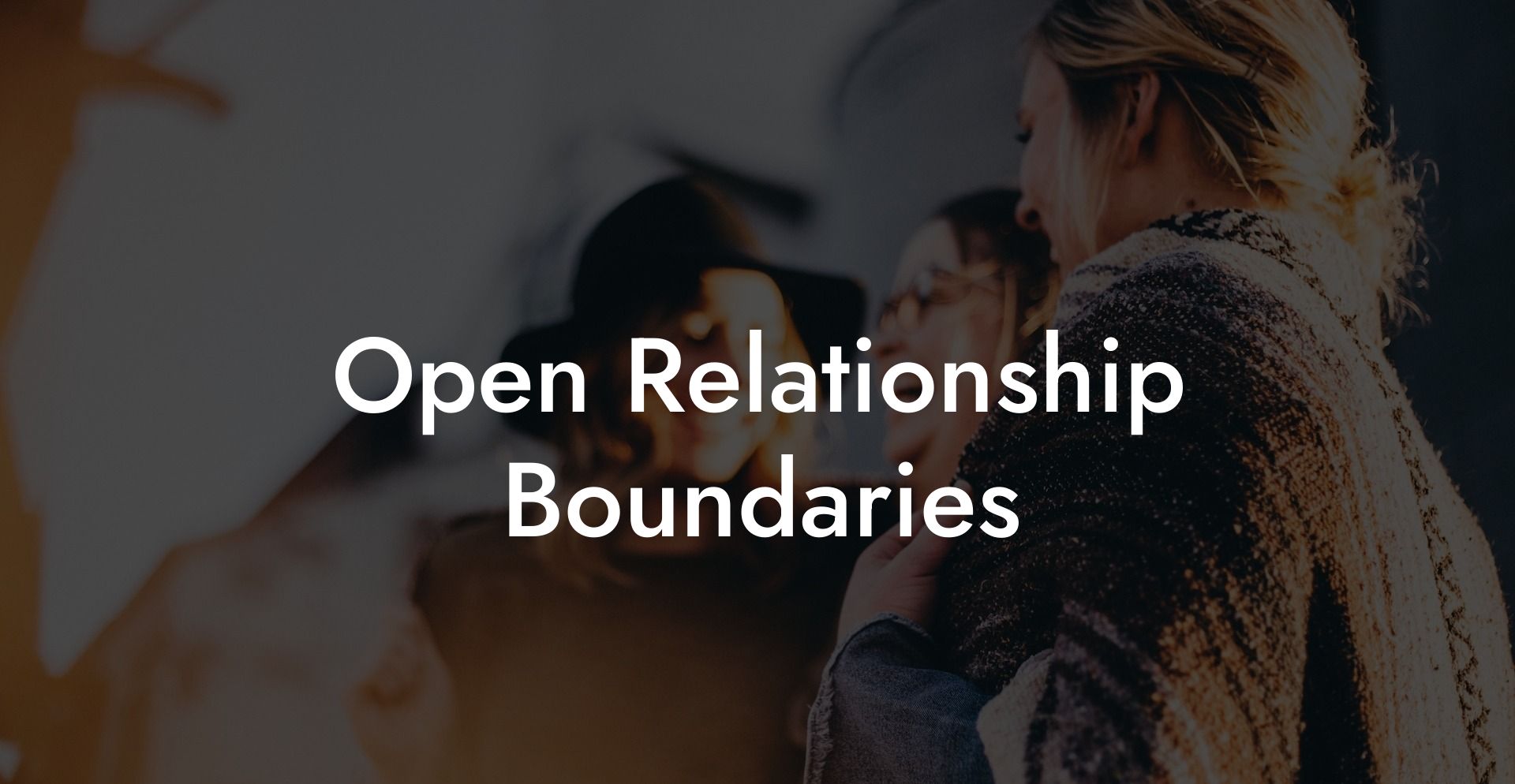Have you ever wondered what an open relationship entails, or how to establish healthy boundaries within it? If so, you're in the right place! Welcome to The Monogamy Experiment, where we break down the intricacies of non-monogamous relationships and provide helpful insight on how to navigate them. Today, we're diving into open relationship boundaries – an essential aspect in maintaining harmony between all involved parties. Let's get started!
Open Relationship Boundaries Table of Contents
What Are Open Relationship Boundaries?
In any type of relationship, boundaries are crucial for maintaining mutual respect, trust, and emotional safety. When it comes to open relationships, establishing clear and well-defined boundaries is even more vital. Open relationship boundaries are agreements made between partners about what is acceptable or unacceptable behavior within the relationship. These agreements help ensure everyone remains comfortable and secure in their relationships while also engaging with other partners.
Why Setting Boundaries in an Open Relationship is Important
- Trust building: Open and honest communication about boundaries helps build trust between partners. This trust is essential for a harmonious and successful open relationship.
- Protection from jealousy: Clearly defined boundaries decrease the likelihood of misunderstandings, which can help minimize potential jealousy among partners.
- Emotional safety: Boundaries ensure that everyone's emotional needs are met, creating a more fulfilling and sustainable relationship for all involved.
- Prioritizing primary partners: In an open relationship, setting boundaries can help prioritize the needs and desires of primary partners while also allowing for individual exploration.
How to Establish Boundaries in an Open Relationship
1. Discuss and define your needs
Before diving into the world of open relationships, it's essential for both partners to clearly identify their wants and needs regarding the arrangement. Consider discussing topics such as the level of emotional involvement, frequency of encounters with other partners, and how much (if any) information you'd like to share about your experiences.
2. Communicate openly and honestly
Open and honest communication is critical in any relationship, but particularly when exploring non-monogamous arrangements. Be transparent about your feelings, and if boundaries need adjustment, don't be afraid to revisit the conversation.
3. Be considerate of each other's feelings
Remember that while you're both exploring this new relationship structure, emotions can be complicated and sometimes overwhelming. Empathetic communication and understanding go a long way in navigating potential hurdles.
4. Revisit and adjust your boundaries
As your open relationship develops, it's natural for your boundaries to evolve as well. It's crucial to keep the lines of communication open and be willing to reassess and fine-tune your agreements to ensure everyone's comfort and happiness.
Open Relationship Boundaries Example:
Let's say Alex and Jamie are in an open relationship and have agreed to a few boundaries. These boundaries include always using protection during encounters with new partners, avoiding emotional entanglements with others, and sharing limited details about their experiences. One day, Alex begins to feel jealous when Jamie mentions spending time with a new partner frequently. They decide to sit down together and discuss the situation, openly and honestly. As a result, they agree to adjust their boundaries, limiting contact with new partners to once every two weeks.
We hope you've found our guide on open relationship boundaries helpful. Remember, the journey to a successful open relationship begins with strong communication skills and a mutual understanding of each other's desires and limits. Please feel free to share this post with others who might benefit from the information and explore our other guides at The Monogamy Experiment. Together, we are building an inclusive and supportive community around non-traditional relationships!













